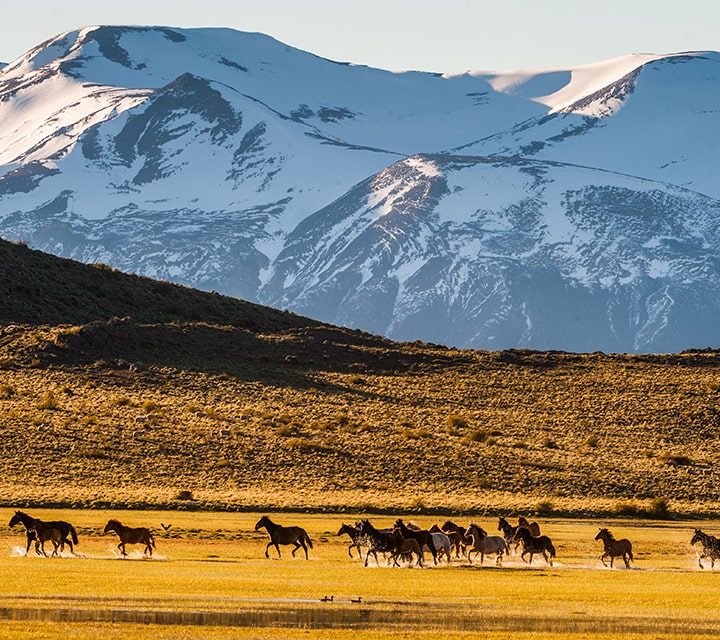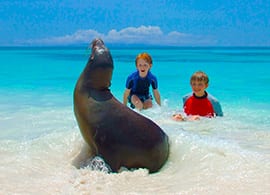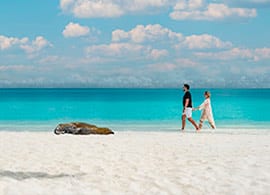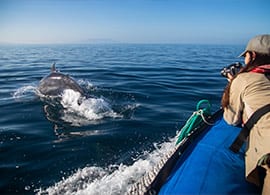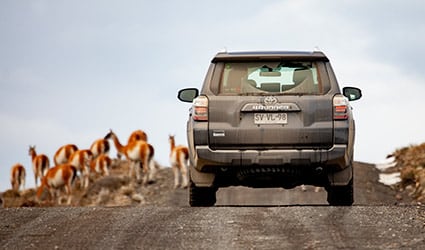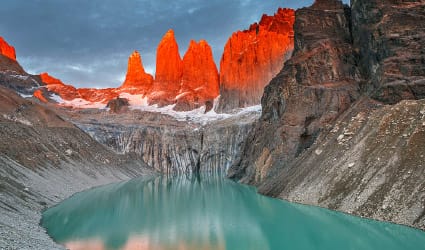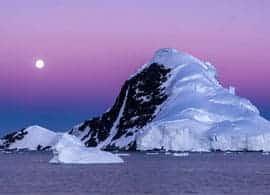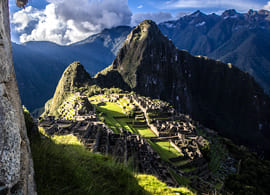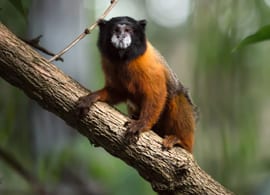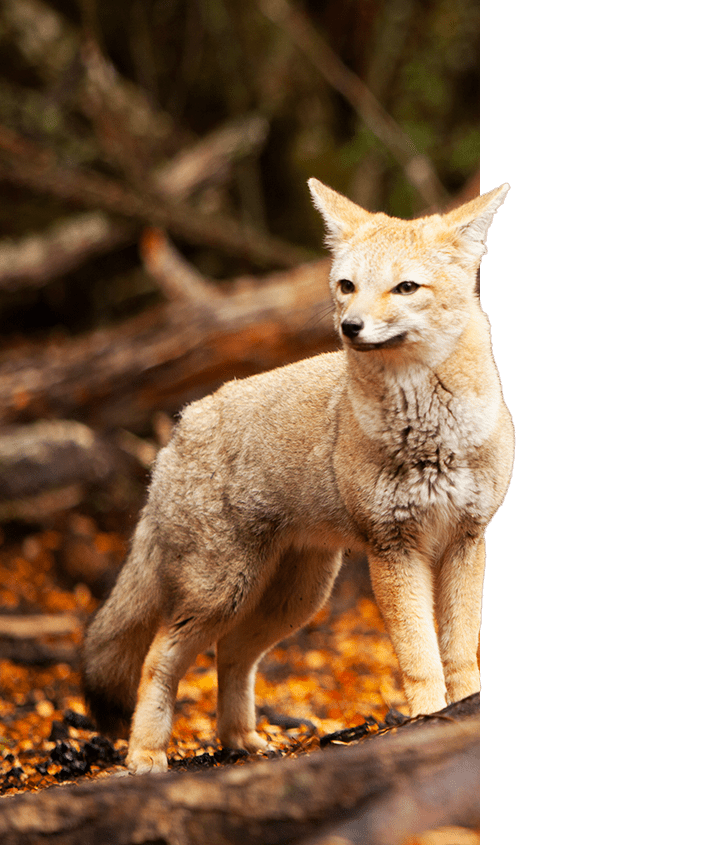
Ever dreamed of escaping to a place where the air is crisp and the landscapes are breathtakingly dramatic? Welcome to Patagonia in July, an untamed winter wonderland. You may ask, "Why visit Patagonia during its coldest month?"
You see, there's something extra special about Patagonia when it's draped in snow. The already stunning Torres del Paine becomes more awe-inspiring while wildlife sightings are even better at Peninsula Valdes.
In this post, you'll learn how skiing down Ushuaia’s slopes can send chills of thrill up your spine and how exploring Los Glaciares National Park feels like stepping into Narnia itself! We're also throwing in some handy tips for navigating Southern Patagonia and gearing up right for the cold.
This is your personal ticket to exploring the world like never before. Dive in and let's start this adventure together!
JUMP TO SECTIONS:
- Embracing the Cold: Patagonia in July
- Skiing Adventures in Patagonia's Winter Wonderland
- Navigating Southern Patagonia in July
- Torres del Paine National Park in Winter
- Exploring Los Glaciares National Park in Winter
- Winter Wildlife Watching in Patagonia
- Preparing for Your Winter Visit to Patagonia
- FAQs About Patagonia in July
Embracing the Cold: Patagonia in July
If you're yearning for a unique adventure, consider visiting Patagonia in July. The chillier temperatures may be intimidating but trust us, it's worth it.
The Patagonia weather conditions are somewhat unpredictable although cold nights and frosty mornings are commonplace. But don't let that deter you. There's something undeniably enchanting about experiencing Patagonia under a blanket of snow.
The Climate and Weather Conditions in July
In this season, daytime temperatures typically hover around 1-6 degrees Celsius (34-43 degrees Fahrenheit). You might encounter strong winds as well, which can make it feel colder than the actual temperature, making it critical to pack accordingly.
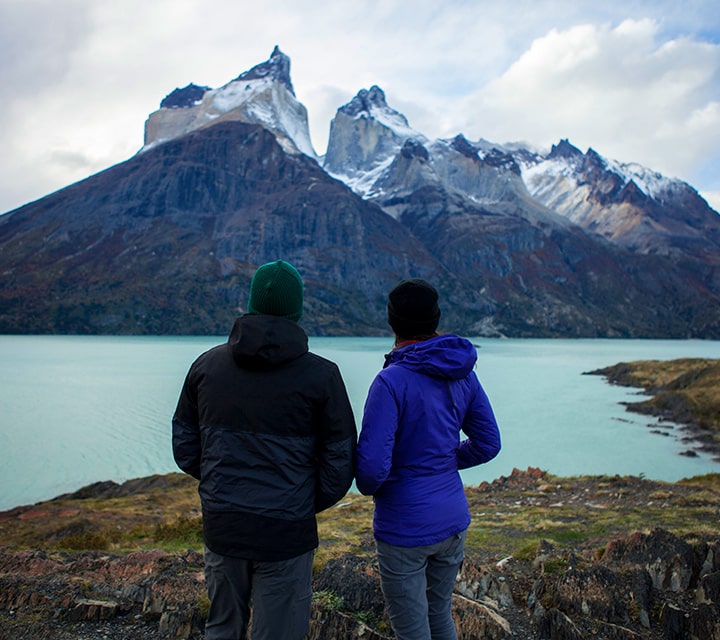
We can't underestimate the importance of packing right when visiting Patagonia during the winter months, including July. Layering your clothes will help combat those cold temperatures effectively while providing flexibility as the day warms up or cools down. Of course, you'll want to top your attire off with gloves and a thick winter coat.
Beyond having to brave the chilly weather, exploring Patagonia in winter comes with its benefits too. Imagine waking up early to catch an awe-inspiring sunrise over snow-capped mountains or sipping on hot cocoa by a roaring fire after a long day of adventures. Sounds pretty amazing doesn't it?
And that's not all.

The Lack of Crowds Makes it Even More Enchanting
Southern Patagonia is devoid of tourists during the winter with temperatures, rain, and shorter days deterring visitors. With fewer travelers in need of accommodation, many lodgings close for the season so there are fewer options. Still, those who brave Patagonia can luck out, enjoying the gorgeous winter landscapes without the infamous wind of summer and a lack of crowds.
Just be sure to prepare for limited transportation and tour services, and take heed of packing requirements.
Cold Nights Under Starry Skies
Another bonus? Those crystal-clear winter skies are perfect for stargazing. Away from city lights and pollution, the brilliant night sky puts on quite a show every evening.
This breathtaking region also offers some fantastic opportunities for outdoor activities such as skiing and wildlife spotting. Think penguins waddling around in their natural habitat and seals lounging on ice floes—it makes for some unforgettable encounters and photos.
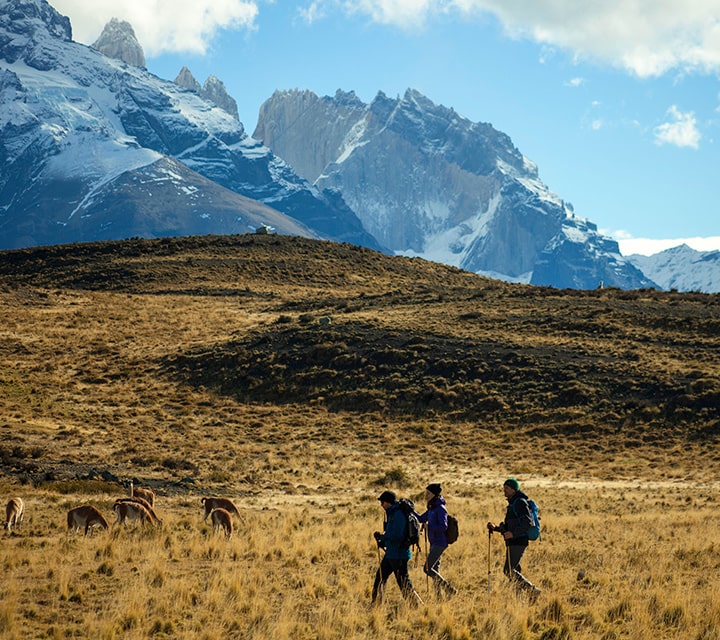
And let's not forget the chance to witness Patagonia’s dramatic landscapes under a blanket of snow. This time of year gives you a different perspective, as familiar sites like Torres del Paine National Park are transformed into winter wonderlands with every corner offering postcard-perfect views.
A journey to Patagonia is definitely worth thinking about.
July Weather in Patagonia
| Puenta Arenas, Chile | Torres del Paine, Chile | El Calafate, Argentina | El Chalten, Argentina | Los Glaciares, Argentina | |
| Avg. Day High | (4°C) 40°F |
(1°C) 34°F |
(0°C) 32°F |
(-1°C) 30°F |
(-1°C) 30°F |
| Avg. Night Low | (1°C) 34°F |
(-3°C) 26°F |
(-5°C) 22°F |
(-6°C) 21°F |
(-5°C) 22°F |
| Chance of rain | 35% | 46% | 22% | 47% | 59% |
| Rainy Days | 10 days | 20 days | 12 days | 1 days | 1 days |
| Snowfall | 2 days | 12 days | 8 day | 20 days | 21 days |
| Sunrise | 9:54 AM | ||||
| Sunset | 5:32 PM | ||||
| Daylight Hours | 7.6 hours | ||||
Key Takeaway:
Who wouldn't want a one-of-a-kind adventure? Think about heading to Patagonia in July. Yes, it's chilly and the weather can change on a dime, but imagine those snowy landscapes that are just picture-perfect. Make sure you're bundled up warm for those breathtaking sunrises over mountains, snug nights by the fire with stars twinkling above (perfect for stargazing), and let's not forget the chance of spotting penguins.
Skiing Adventures in Patagonia's Winter Wonderland
When July rolls around, Patagonia becomes a winter wonderland, opening up opportunities for exhilarating winter adventures.
For travelers interested in snow sports, Patagonia has several great ski resorts sprinkled around Chile's Lake District and Argentina's southern Andes with powdery conditions. In fact, Argentina's ski scene has been gaining press in recent years and it's often less crowded since Chile typically draws more foreigners interested in hitting the slopes.
For adrenaline junkies and ski enthusiasts alike, the snowy slopes of Ushuaia offer thrilling downhill skiing experiences.

Known as the southernmost city in the world, Ushuaia is home to some of Argentina's most exceptional ski resorts. The combination of moderate inclines and stunning backcountry tracks make it an ideal area for both novices and seasoned skiers. Plus, with long daylight hours during winter months, you'll have plenty of time to enjoy your day on the snow-covered mountain slopes.
While there are many options to choose from, you can start by looking at Argentine resorts like Chapelco (near San Martín de Los Andes) as well as La Hoya (an excellent choice for families). Another option near Ushuaia, the southernmost city in the world, is the world-class ski area around Cerro Castor.
Do keep in mind that while the winter months experience the lowest number of foreign visitors compared to other seasons, mountain ski resorts tend to bustle with skiers and snowboarders, especially with Chilean and Argentinian families taking winter breaks. Schools also schedule week-long, half-term breaks during terms. The exact dates are decided by the schools themselves. Either way, that means it's important to book well in advance and be prepared to pay more as it's a pricier month for skiing and boarding.
The Charm of Ushuaia's Slopes
In addition to its glorious scenery with towering Andean peaks dusted with fresh powder against clear blue skies, Ushuaian slopes cater well to Nordic skiing aficionados. This cross-country style offers a unique way to explore this part of Patagonia while getting an invigorating workout.
If that isn't enough, just imagine zipping down these hills at twilight. That’s right: nighttime skiing is another popular pastime here thanks to extended evening light during winter months . There’s something truly magical about watching sunset hues melt into star-studded night skies from atop a mountain.
Fancy trying your hand at more advanced routes? Check out nearby Cerro Castor Ski Resort offering longer runs and challenging terrains suited perfectly for those seeking adventure beyond their comfort zones.

No matter your skill level, Ushuaia offers a plethora of skiing opportunities. With temperatures relatively mild for winter, July is an ideal time to enjoy skiing without the extreme cold.
In conclusion, if you're looking for an adventure-packed vacation with lots of snow and outdoor activities, consider visiting Patagonia in July. You'll find plenty of downhill and backcountry skiing options waiting just for you.
Key Takeaway:
When winter hits in July, Patagonia becomes a skier's paradise. Ushuaia boasts thrilling slopes and beautiful trails perfect for all skill levels, from beginners to pros. With nighttime skiing, even longer adventures on the slopes can be savored. Skiing after dark is truly not to be missed, offering an unforgettable view of the star-studded skies.
Navigating Southern Patagonia in July
Visiting Southern Patagonia during the off-peak tourist season month of July is an experience that provides a mix of thrill and serenity. The colder temperatures and snow-capped landscapes make for stunning views, but it does mean you'll need to pack warm clothing.
Despite the low tourist season, Patagonia still retains its magical allure. On clear days, exploring Patagonia's dramatic landscapes becomes even more enchanting under a blanket of white.
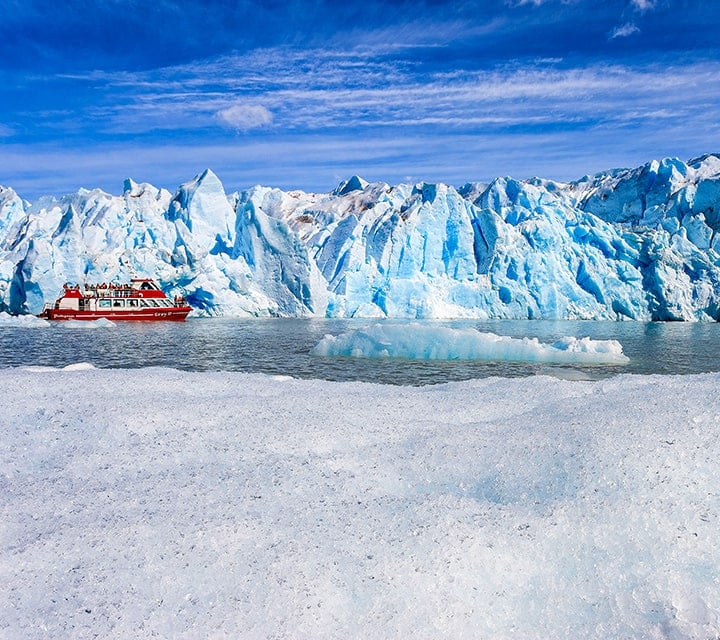
Finding Travel Deals During Off-Peak Season
In terms of travel deals and offers, winter tends to provide better opportunities than summer. Due to the lack of crowds as previously noted, at popular sites like El Calafate or Torres Del Paine National Park, you can look forward to capturing photos without constant interruption. Get ready for some great photo ops without the hordes photobombing them.
Airlines also tend to offer lower prices during these months as they try to attract more travelers despite less-than-optimal weather conditions. So if you're flexible about when you visit Patagonia and can handle the cooler temps (think layers), this could be a perfect time.
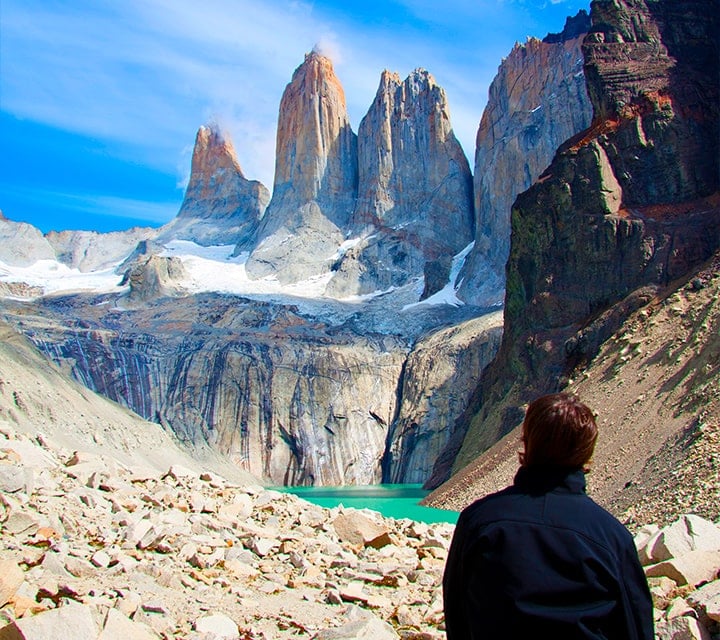
Bearing Weather Conditions In Mind
The cold isn't all bad news. Sure, strong winds can kick up now and then causing temperatures to dip into freezing levels at night. But those same winds also help create unbelievably beautiful ice formations on bodies of water around places like Punta Arenas or Tierra del Fuego.It’s important, however, to not just rely on what looks pretty. Dressing warmly will keep discomfort at bay while still allowing one to enjoy their outdoor adventures comfortably, among the seriously stunning winter scenery.
Enjoying Winter Activities
Patagonia in July isn't just about sightseeing. There is a range of other outdoor activities to enjoy beyond skiing and boarding. It's even possible to enjoy mountain biking along the Carretera Austral if you're prepared for the more challenging conditions and cold. Horse riding in the winter around Villa O'Higgins will immerse you in the snowy terrain. Nothing beats the thrill of gliding through fresh powder with a chill in the air and spectacular views around you.

Key Takeaway:
The majestic landscapes provide stunning backdrops for photography, and the thrilling winter activities will fill your days with adventure. Remember to pack those warm layers as temperatures can dip, but rest assured, Southern Patagonia in July is a spectacle not to be missed.
Torres del Paine National Park in Winter
Experiencing the majesty of Torres del Paine National Park during winter is like stepping into a dream. The landscapes are transformed, offering breathtaking views that are unique to this time of year.
The cold months bring about serene beauty and quiet trails—perfect for those who crave solitude. Don't be deceived by the peacefulness as you'll find much to enjoy and observe.
Experience Unmatched Beauty
The snow-capped peaks against clear blue skies offer dramatic contrasts not seen at other times of the year. Iconic landmarks such as Los Cuernos ("The Horns"), become even more majestic with their snowy mantles.

Snowy scenes create magical photo opportunities, so make sure your camera is ready. Even though temperatures range between -1°C (30°F) and 5°C (41°F), on a sunny day it can feel warmer than expected due to Patagonia's infamous winds dropping off in intensity during winter.
Hiking Opportunities Abound
Avoiding high-season crowds means you'll enjoy a more intimate experience with nature while exploring hiking trails dusted with fresh snowfall. Remember to pack warm clothes because weather conditions can change rapidly within a single day in Torres Del Paine National Park, especially during July. If the trails become snow-covered, snowshoeing offers an ideal alternative.
Be sure to bring those thermal layers too, as wind chill can cause temperatures to feel colder than they actually are. With proper preparation, you will find these hikes incredibly rewarding despite the chilly climate.

Winter Wildlife Encounters in July
You may think wildlife sightings would be rare given the freezing temperatures. Surprisingly enough, many animals remain active throughout winter providing great opportunities for wildlife spotting.
Look out for herds of guanacos against the snowy backdrop, and keep an eye on the sky—you might spot Andean condors soaring above. For those willing to brave the cold, a winter visit is sure to reward with unique experiences and breathtaking sights.

Key Takeaway:
Immerse yourself in the dreamlike winter beauty of Torres del Paine National Park, where tranquil trails and snowy landscapes provide a serene escape. Snap unforgettable photos of snow-capped peaks against blue skies, bundle up for intimate hikes among the fresh snowfall, and spot wildlife thriving despite the chill. A well-prepared winter visit not only rewards you with unique experiences but also offers sights you won't soon forget.
Exploring Los Glaciares National Park in Winter
Touring Los Glaciares National Park in the Patagonian region during wintertime can be a truly remarkable experience. But what does it feel like visiting this icy wonderland during July, when temperatures drop and snow blankets its dramatic landscapes?
In July, Los Glaciares becomes an even more serene paradise. The biting cold can be intense but offers a fresh perspective on the park's iconic glaciers such as Perito Moreno and Upsala.
The Icy Majesty of Perito Moreno Glacier
The Perito Moreno glacier, one of the most dynamic and accessible ice fields within Los Glaciares, takes on a new level of grandeur during winter. As you watch giant ice chunks calve off into Lake Argentino with thunderous splashes from safe viewing platforms, you'll realize that nature's showstoppers are worth braving chilly winds for.

Winter Hiking: A Frosty Adventure
Hiking opportunities do not dwindle even amidst falling temperatures. While some trails may close due to weather conditions or strong winds, making it a must to check ahead, others remain open year-round offering unique experiences. Imagine being immersed in snowy forests before reaching stunning vistas showcasing iced-over lakes framed by towering mountains.
Navigating Your Visit Safely
Making sure your visit is both enjoyable and safe is key during these colder months. Dressing warmly is essential with thermal layers and waterproof outerwear. Hiring a local guide can also help navigate the park's changing winter conditions while enhancing your understanding of this unique ecosystem.
Wildlife Encounters in Winter
The cold season doesn't mean you'll miss out on wildlife spotting opportunities. You might be lucky enough to see condors soaring against snow-capped peaks or to catch a sight of guanacos blending into the wintry landscapes. Despite the need for a bit more planning and some grit against the cold, visiting Los Glaciares National Park in Patagonia's winter can reward you with unparalleled experiences and breathtaking views.
Key Takeaway:
Experiencing Los Glaciares National Park in Patagonia during July's winter is an icy wonderland adventure. You'll witness the majestic Perito Moreno Glacier's splendor, navigate snow-laden hiking trails, and spot wildlife against snowy peaks. But remember to dress warmly—maybe hire a local guide for safety, and brace yourself for magnificent views.
Winter Wildlife Watching in Patagonia
For wildlife enthusiasts, July in Patagonia is an ideal time to witness some remarkable animal sightings. It's not the high season for tourists but it is prime time for some unique animal sightings.
A Whale’s Paradise: The Valdes Peninsula
The Valdes Peninsula, situated off Argentina’s Atlantic coast, becomes a hub of activity in July. Here, southern right whales arrive to breed and raise their calves before migrating back to Antarctic waters.
Imagine standing on the beach while these gentle giants breach and tail-slap only meters away. Keep in mind that boat tours are also available if you want an even closer look.

Cute Critters at Tierra del Fuego National Park
In the extreme south of Argentina lies Tierra del Fuego National Park. Here, winter brings out herds of guanacos—camelids which are native to South America with a similar appearance to llamas. They're shy creatures, but seeing them roam freely through snowy landscapes is simply unforgettable.
A Birdwatcher’s Delight: Los Glaciares National Park
Los Glaciares National Park, located near El Calafate, offers great opportunities too. Look out for Andean condors soaring against crisp blue skies or Magellanic woodpeckers creating a rhythmic soundtrack as they peck at tree trunks. Winter treks in the park can also lead to encounters with playful Andean foxes.
Patagonia's wildlife is a marvel to behold, but during winter months you'll have even more opportunities for viewing with many species coming out in full force. But remember: always respect the animals' space and observe from a distance. It’s their home we’re visiting, after all.
Key Takeaway:
Immerse yourself in the dreamlike winter beauty of Torres del Paine National Park, where tranquil trails and snowy landscapes provide a serene escape. Snap unforgettable photos of snow-capped peaks against blue skies, bundle up for intimate hikes among the fresh snowfall, and spot wildlife thriving despite the chill. A well-prepared winter visit not only rewards you with unique experiences but also offers sights you won't soon forget.
Preparing for Your Winter Visit to Patagonia
Your journey to Patagonia in July is not a decision to be taken lightly. The region's dramatic landscapes and wildlife viewing opportunities are unrivaled, but the winter weather can be unpredictable. Ensure you have the necessary items to make your Patagonian adventure in July as enjoyable as possible.
The Right Clothing
To stay comfortable during cold nights or unexpected storms, thermal underwear is key. A good set will keep you warm without being too bulky.
A waterproof jacket with insulation offers protection against rain and wind while retaining body heat. Don't forget sturdy waterproof boots that can handle both hiking trails and slippery ice patches.

Necessary Gear
In addition to clothing, certain gear can enhance your experience tremendously when visiting places like Torres del Paine National Park or Los Glaciares National Park in the heart of Patagonian winter.
Gloves: Choose insulated gloves that allow dexterity for tasks such as setting up camp or handling camera equipment while keeping fingers from freezing over.
Sunglasses: With long days reflecting off snow-covered peaks at El Chaltén or Cerro Castillo, protect your eyes from harsh UV rays with quality sunglasses.
Sunscreen: No matter how cold it gets out there on those slopes near Ushuaia, sunscreen remains a must-have item. You'd be surprised how easily one can get sunburned even on a cloudy day due to high-altitude UV exposure. Learn more here - Patagonia Packing List
Cautious Planning
Checking the small stuff when organizing your journey will make sure nothing spoils this special experience. Do research on potential closures of hiking routes or visitor centers in national parks like Torres del Paine due to winter conditions.
Consider booking your accommodations well in advance, as some lodges may have limited availability during the off-peak tourist season. A guided tour could also be a wise choice for navigating challenging terrains and ensuring safety while maximizing wildlife spotting opportunities.
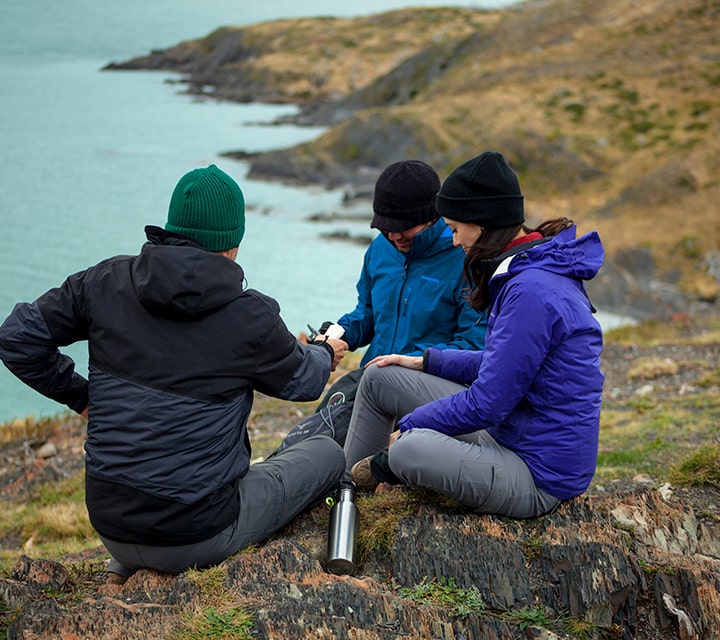
Key Takeaway:
Embrace the magic of Patagonia in July with careful planning. Pack thermal clothing, sturdy boots, and essential gear like gloves, sunglasses, and sunscreen to tackle unpredictable winter weather. Do your homework on potential route closures or limited accommodations during off-peak season. Consider guided tours for a safe yet thrilling wildlife experience.
Conclusion
Exploring Patagonia in July is all about embracing the cold and immersing yourself in winter adventures. The slopes of Ushuaia become your playground, while the Torres del Paine National Park transforms into a winter paradise.
The off-peak tourist season might challenge you with unpredictable weather, but it rewards you with serene landscapes and great travel deals. Wildlife watching at Peninsula Valdes is simply an experience that can't be missed!
Los Glaciares National Park takes on a mystical aura in the winter, providing one-of-a-kind experiences for adrenaline junkies and nature lovers alike.
In conclusion, make sure to pack right—think thermal underwear and a waterproof jacket—because exploring Patagonia during this time isn’t just about surviving, it’s about thriving among awe-inspiring beauty.
